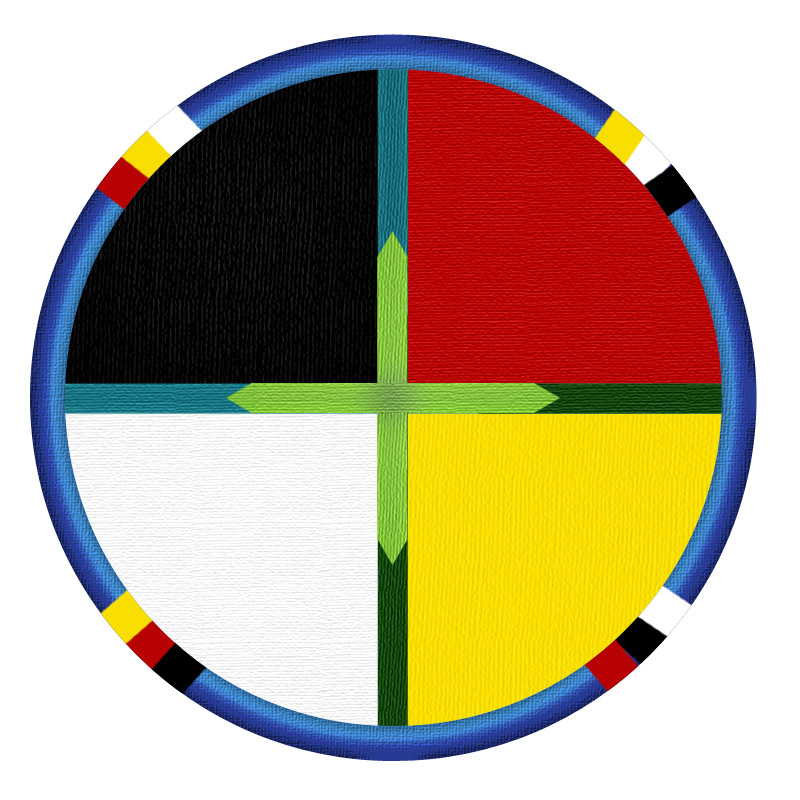
The CIRCLE of COURAGE®
A MODEL FOR REACHING & TEACHING
YOUNGSTERS AT HIGH RISK FOR NEGATIVE LIFE OUTCOMES

Image by Tom McIntyre
Perhaps you, like I, have worked in a professional capacity with youngsters known to be a danger to themselves and others… Kids who are described as being highly aggressive, overly hostile, or persistently defiant… Or conversely, so severely withdrawn and deeply burrowed into themselves that they wallow in self-pity and shun social contact with others.
These unfortunate kids, damaged emotionally by their life circumstances, are viewed by many otherwise helpful and competent professionals to be “lost causes”. The aberrant behaviors of these seemingly unmotivated students are maladaptive, but understandable psychological defenses against the fateful, difficult life conditions in which they found themselves.
Often, those caring, child-centered folks who initially try to help, but then fail in their effort, erect their own psychological defenses in order to hide their professional disillusionment, disappointment, and demoralization… from themselves and colleagues. Now they speak negatively of these errant youth to others. When in the presence of these misdirected youngsters, conflict predictably occurs, followed by retaliatory disciplinary measures not ones meant as instructive consequences, but rather, as hurtful counterattacks against the child who has inflicted intense personal and professional pain upon them.
Now, I’m not going to mention anything about your big butt, balding head, or yellow teeth… but these kids will. I’m not going to tell you that your lessons, born of rigorous planning and presented with profuse professional teaching effort and energy, are boring… but these kids will. I’m not going to tell you to go away when you offer to give of your time and energy to help me… but these kids will.
Certainly, no one wishes to experience the “negative contagion effect” of becoming demoralized by failing repeatedly with demoralized kids. But how else can someone be expected to feel and act when our hand, outreached in compassion, is slapped away? How else would one be expected to respond when our expression of personal caring and display of professional training is rejected by those who are most in need of them? How long do we bang our professional heads against a behavioural brick wall before we step back from trying to break through, and move on to those pupils who appreciate our efforts? What do we need to do in order to break through the hardest of the hardened characters?
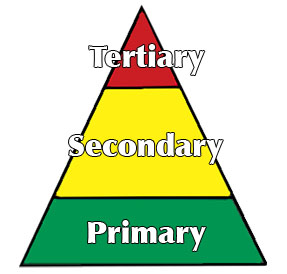
How should consummate professionals respond to the sub-group of kids
at the pinnacle-point of Tier 3 of the PBIS model?

How do caring & competent educators reach & teach relationship-resistant kids who laugh at ABA interventions, smirk at counseling attempts, rebel against supportive guidance, and tell you to stick your point system where the sun don’t shine?
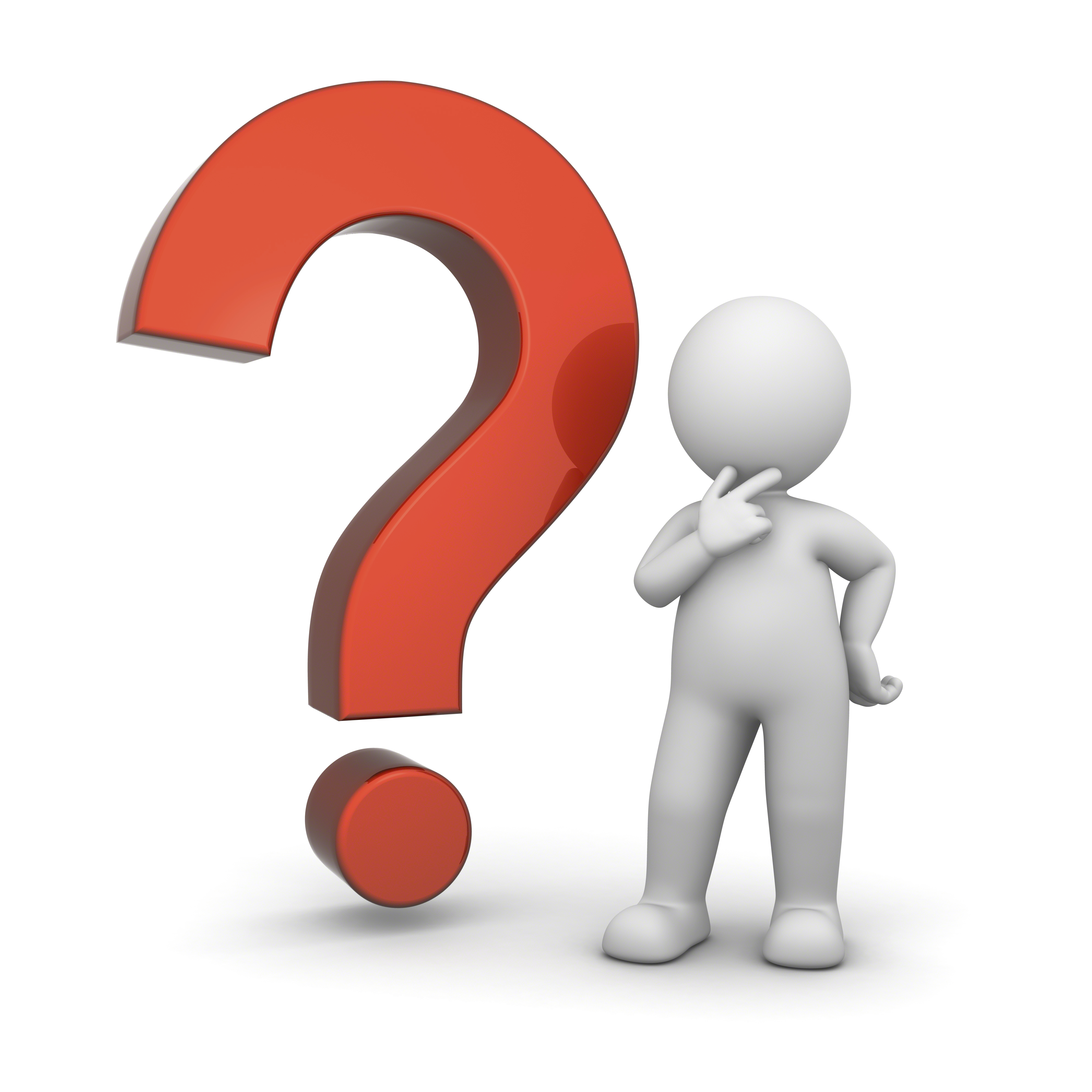
How do we respond when our good intentions bring about bad outcomes, as when deeply disturbed and disturbing youngsters with their (presently) psychopathic/sociopathic mental states, attend to our social skills lessons only so that they can learn new ways to victimize others? How do we instill a pro-social morality in kids who scorn and reject society’s rules and value orientation?
We know that there is still a soft part hidden somewhere behind the hardened psychological defenses
of those junior citizens. We know that their 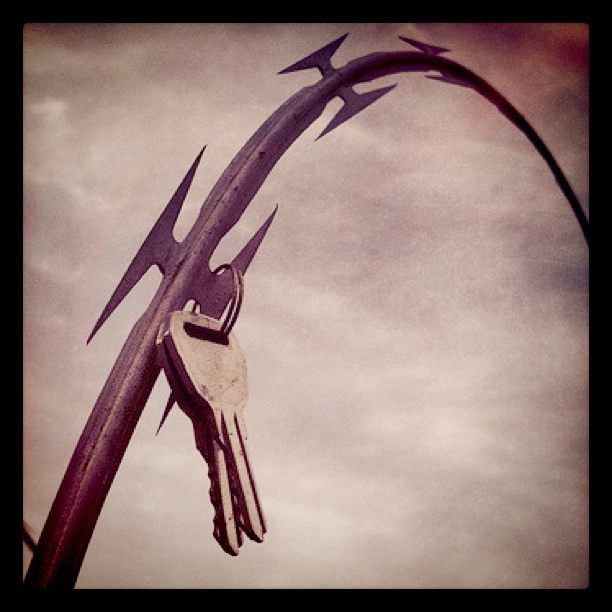 barbed wire personalities were set up to prevent further harm, BUT HOW do we prove to them that we are friend, not foe?
barbed wire personalities were set up to prevent further harm, BUT HOW do we prove to them that we are friend, not foe?
How do we prove that we are different from those others before us who promised to help, but then rejected or punished the child when s/he didn’t perform at peak ability at all times?
How do we prove that we are not yet another Trojan Horse whose appearance is impressive, but contains harm if let inside one’s impenetrable personal walls?
Horse whose appearance is impressive, but contains harm if let inside one’s impenetrable personal walls?
How do we reclaim those youngsters who have been thrown on society’s trash heap? How do we restore them to value once again?
How can we “save” kids who are sinking in life’s muck and mire when they refuse our rescue attempts?
muck and mire when they refuse our rescue attempts?
Yes, I’m full of questions, but I also come equipped with answers to them.
On other BehaviorAdvisor pages, we’ve talked about my book written FOR kids with severe behavior disorders (It has a 4th grade reading level, just like these e-mails!) , programming for incarcerated youth, and how to increase intervention-resistant youngsters’ willingness to change their ways for the better.
There is one approach
that has fulfilled its promise
to make a difference
in the lives of kids
who are at great risk
for negative life outcomes…
The Circle of Courage® model provides educators with an evidence-based, proven approach for reaching and teaching youth with severe emotional and behavioral disorders. It integrates research on positive youth development with the best of positive thought, professional wisdom, and educational practice. While I'm not affiliated with the Circle of Courage folks in any way, I'm a big advocate for the Circle of Courage model.
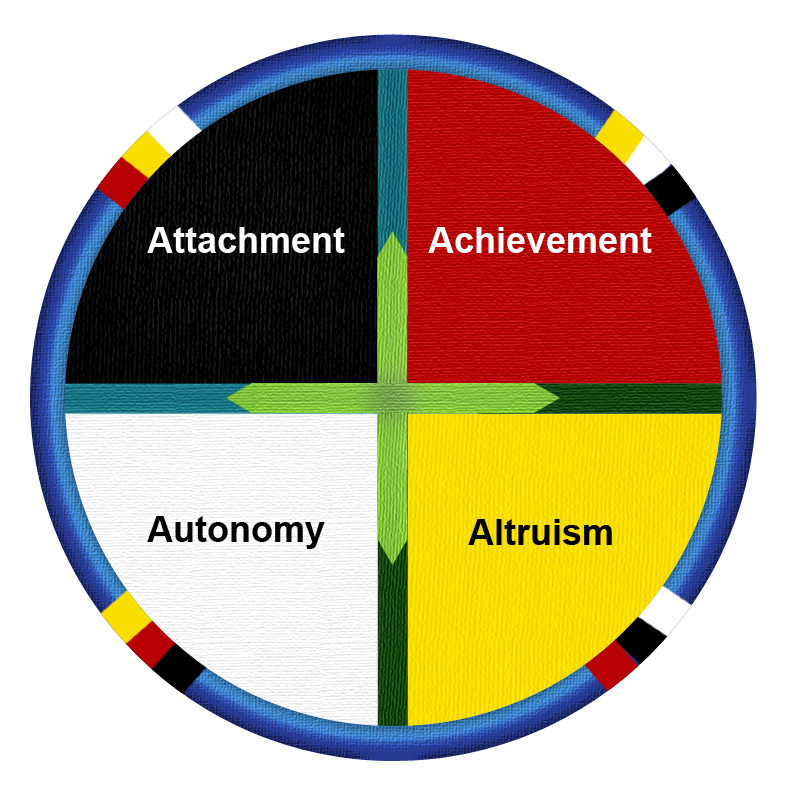 Image by Tom McIntyre
Image by Tom McIntyre
The medicine wheel image that symbolizes the Circle of Courage assessment & intervention model reflects the intertwining of the components of human character that are essential for healthy emotional development.
All four parts of an individual's "circle" must be intact in order to have a self-secure, prosocial approach to life. A lack of strength in any of the four areas of development results in emotional and behavioral difficulties.
Let's look at each one individually:
Belonging/Attachment: This lynchpin character need is met by being prosocially connected to significant others; having a sense of emotional connection to individuals singly or in groups (clubs, teams, interest groups, family, supportive people). Having emotionally healthy and secure bonds with others promotes feelings of positive self-worth, preparing youngsters to form these same nurturing attachments with decent, upright people in the future.
As Abraham Maslow (1953) pointed out in his "Hierarchy of Needs" model, after quaranteeing that physiological needs (e.g., minimal levels of food, water, temperature) are met, "Love and Belonging" needs are the next most important. Humans have a primal need to feel valued, important, and protected by significant others in their lives... to feel comfortable and welcomed within a frequent and important group such as family, friends, colleagues, etc. Of course, the family and one's close personal community are the most important influences on the original development of this area of self.
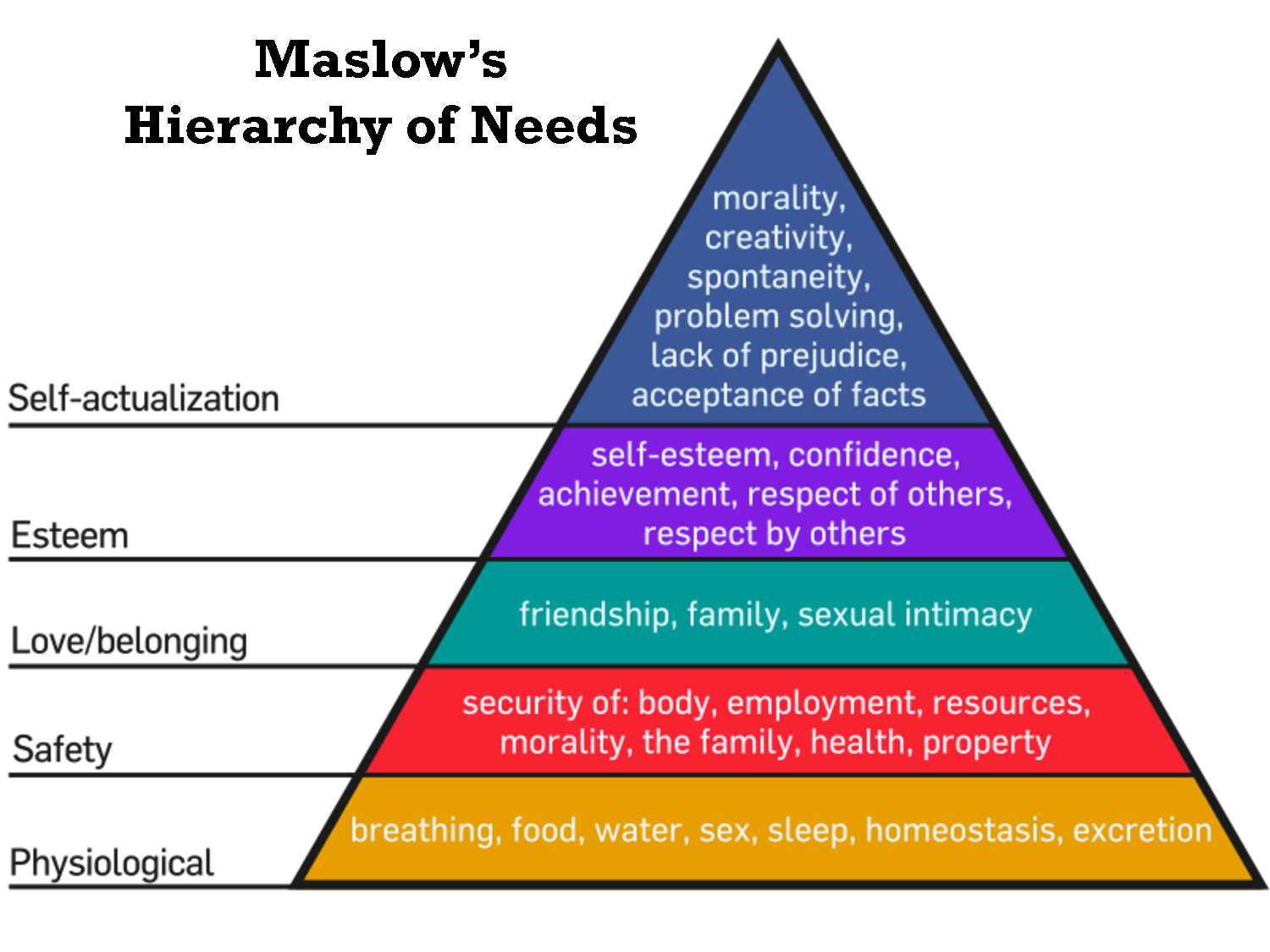
Those individuals who have weak feelings of "belonging" due to a disrupted or non-supportive upbringing are often able to rebuild or strengthen that area by developing close allegiances, friendships, and relationships later in their lives with positive people and groups. However, those who do not repair that broken area of self may display one or more of many problems in relating to others. As examples of a few misdirected attempts to "belong", they may join into or identify with negative groups that promote crime, religious hatred, disregard for the rights of others, negative use of the internet, or some other distorted views and actions.
This connection with negative influences develops in an attempt to feel important and be accepted within a social structure. Many of these misguided youth have an absence of previous contact with positive people. Or, they may have had repeated negative contact that oftentimes results when helping professionals become frustrated with their lack of positive impact on the resistant youngster, and strike out toward or abandon him/her.
These misdirected youth may become increasingly non-responsive or resistant to the efforts of good people and groups (including counselors and teachers) because they do not feel worthy of inclusion, or for fear of being again rejected by positive people who claim to care, but will at some point abandon their reclaiming efforts as has happened before in their young lives. In essence, these defiant, aggressive, callous, misdirected youngsters scare off those with whom they most need and want to be connected, believing that no one could ever fully and unconditionally care for them. That view is based on their past experiences. They are products of their part of society.
If one has an impaired, distorted, or absent sense of belonging, it will almost certainly effect one or more of the other four areas of one's character.
Mastery/Achievement: When one can take pride in one's competence in areas of strength, there is a willingness to undertake the learning of new skills and knowledge bases, thus making one more capable and willing to undertake more new challenges. Overseen by mentors, talents develop in a self-managed, non-braggart type of youngster.
Those who are strong in the medicine wheel quadrant of "Mastery" feel competent in their abilities, and seek more skills and knowledge. They are willing to fail, appear unskilled, or look "silly" when they try new things, because they see the situation as an opportunity to learn and have fun. To them, failure is viewed as a learning experience. Their secure self image allows them to energetically undertake tasks and activities in which they may not be fully or even partially successful. They enjoy the challenge. Those individuals with an impaired sense of mastery have low self esteem and holes in their self concept. They may refuse to attempt a task for fear of failure, give up easily, be dependent on others' continous guidance in order to engage in or continue on a task, and/or may devalue and ridicule schooling or the efforts of others.
Independence/Autonomy: Children need opportunities to develop self-sufficiency and self-governance. This is accomplished by being given opportunities to accept responsibility, and prove oneself trustworthy. From these learning experiences, youngsters develop the ability to self-manage their actions and make good choices. They learn how their decisions influence their destiny.
Persons with a strong sense of "Independence" feel in control of themselves, their behavior, and their lives. They have a well-developed sense of autonomy, and accept responsibility for themselves and their actions. On the other hand, those who have a lessened or absent sense of independence are likely to engage in "scatter-brained" or disorganized behavior, be easily swayed by others into engaging in irresponsible or inappropriate actions, and blame circumstances/others for their actions.
Generosity/Altruism: Children need opportunities to engage in helpful and thoughtful behaviors. By helping individuals and groups who live in their immediate world (without expectation of payment), youngsters develop and strengthen a helpful inclination.
For example, those who have a strong sense of "Generosity" (because those in the groups to which they belonged when they were young shared time, work, play, resources, and knowledge) are empathetic toward others and want to help others. They give of themselves or their possessions in various ways. They truly have the "joy of giving", receiving pleasure from helping others in need. Folks who have a distorted or absent sense of generosity might display behaviors described as "stingy", "callous", "uncaring", and lacking in concern for the welfare of others. They "take" rather than "give" (absent quadrant of Generosity) or show their malformed sense of generousity in odd ways (e.g., being overly giving due to feelings of obligation).
The Intertwining
These four dimensions of the Circle of Courage model are inextricably intertwined, each one responding to and affecting the others and the whole. For example: Reaching out without taking back (Generosity), builds and maintains positive interpersonal relationships (Belonging), and teaches selfless and socially responsible action (Independence). Others, appreciating the generous actions, invite the youngster to socially engage with them (Belonging). Mentors in the dyads or group teach their talents, knowledge, and wisdom to the others. Their generosity promotes mastery and independence, and models generosity.
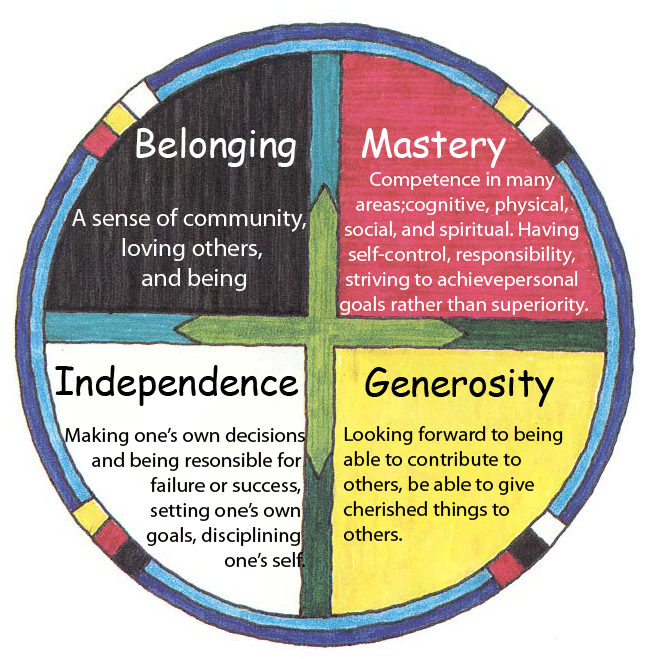
The youngsters who were denied compassionate, positive, and meaningful guidance are the ones that we find at PBIS Tier 3. They may have many distorted skills and thoughts. For example: Consider the youngster who possesses leadership skills, but devoid of prosocial “independence”, uses that personal magnetism to lead others down a negative path… others who have an unmet need to “belong”. They are mentored, as was their leader, by someone who has a broken or bent wheel. They develop distorted "mastery" in errant ways.
For some psychologically injured or malnourished kids, they have a near or total absence of one or more of the quadrants of the Circle. They may have no generosity or feelings of belonging. They can hurt others without conscience... a mental health condition we call "psychopathic"
Either way, they are in need of The Behavior Transformation Guide  combined with a comprehensive model like The Circle of Courage.
combined with a comprehensive model like The Circle of Courage.  Image by Tom McIntyre
Image by Tom McIntyre
Cross Cultural Applicability
Can an indigenous people’s medicine wheel representation of positive human character and actions apply to the life orientation of other groups on our globe… like yours? YES! There are certain universal traits that characterize prosocial well-adjusted individuals in all cultures on our blue-green orb. This unique model aligns nicely with the philosophies and writings of other cultural groups.
Summation
We want our schools to be "Reclaiming Environments" that provide a feeling of belonging and being accepted in a supportive place filled with persistently tolerant, caring and skilled professionals. We want to help students achieve to their potentials and fully develop their sense of mastery. By providing opportunities for care giving and helping, we can promote generosity. Through wise and supportive coaching, we can help those who misbehave to develop their independence in making better decisions.
The Circle of Courage® model has been placed into practice in educational programs world-wide, and is supported by testimony and research evidence of its effectiveness. It is a non-punitive, integrated, holistic model for improving distorted and absent character traits, and building a stronger, more positive personal sense of self in kids. It is a comprehensive and detailed behavior change model that builds community, and addresses the socio-emotional needs of all youngsters, Tiers 1, 2 or 3… but especially Tier 3.
The Circle of Courage Model: Placed into Practice
(Materials created by teacher candidates enrolled in Dr. Mac's Behavior Disorders Program)
Jane: (audio) 14 year old girl has controlling parents and no friends. Highly promiscuous.
Jesse: (audio) 12 year old boy is bully. Avoids school & schoolwork. Seeks negative attention.
William: (audio) 15 year old boy with PDD-NOS
Caroline: (audio) Part 1 Part 2 15 year old girl with "behavior disordered" label is aggressive, defiant & promiscuous. Has run away, is depressed & suicidal.
Rachel: (video) 11 year old girl with cognitive & physical impairments is neglected by overwhelmed parents of 11 children.
James: (video) 10 year old boy refuses to work or comply with teacher directions. No caring adults in his her life (including teacher). Prescribed plan was implemented. Narrator describes plan and success.
Chelsea: (audio) 9 year old girl, adopted from an abusive family has academic difficulties. Displays behavior that is attention seeking, defiant & angry.
No Name: (audio) 7 year old boy with autism who displays non-compliant & aggressive actions toward peers & adults.
Brianne: (video is blank - audio only) 6 year old girl is a social outcast. Low academic achievement & displays aggression against peers.
William: (audio) 15 year old boy with PDD-NOS. Inappropriate interactions, aggressive, forgetful, and delayed development.
Brie: (audio) 8 year old girl held back in first grade. Mean and hurtful toward other students.
Dr. Mac's four videos explaining the Circle of Courage model:
Part 1 (7:09) : Dr Mac explains the history of the model .
Part 2 (8:57): Dr. Mac provides an overview of the model and it's global applicability to youngsters of all cultural backgrounds.
Part 3 (15:23): Dr. Mac provides an in-depth look in to the different components of the Circle of Courage model.
Part 4 (9:13): In this final segment, Dr. Mac addresses the assessment of a youngster's character, & how caring adults can intervene using the C of C model as a guide. It is available to to you with the purchase of the "YAF-QC Combo Package" OR "The Total Package". (see below)
.
 PBIS tiers addressed by this intervention approach: All 3 tiers. (But one of the few programs effective with Tier 3, intervention-resistant youngsters.
PBIS tiers addressed by this intervention approach: All 3 tiers. (But one of the few programs effective with Tier 3, intervention-resistant youngsters.
_____________________
Assessment instruments that support & improve upon
the “Developmental Audit”® process

The “Circle of Courage” (Brendtro, Brokenleg, & VanBockern, 1990) as explained by Dr. Mac in his four part video description of the model is a popular evidence-based psycho-educational model for re-orienting the errant self-concept, values, beliefs, and actions of youngsters with severe emotional and behavioral disorders. Effective application of this approach is dependent upon the correct identification of strengths and weaknesses in a young person’s character makeup. This character assessment is conducted via a process known as a “Developmental Audit”®.
The Developmental Audit is a rather vague and nebulous procedure conducted by individuals with advanced training in the model. From the results of the Developmental Audit, a general plan of action is devised for reorienting the errant mindset and aberrant behavioral pattern of the misdirected youngster at-risk for poor life outcomes. Basic information regarding the Developmental Audit process can be found at: http://www.reclaiming.com/content/trainings/developmental-audit & http://www.manitobacec.ca/documents/2014/Developmental_Audit_Transforming_Assessment.pdf
Dr. Tom McIntyre (Dr. Mac) has developed two instruments that are designed to expand the accuracy and usefulness of the Developmental Audit procedure. They can be used in isolation as an audit assessment, or in conjunction with information gained in the advanced training provided only by Starr Global Training Network.
.
1. The “Youth Audit Form” collects essential information that guides ensuing discussions regarding remediation.
2. The “Quadrant Checklists” contain a vast collection of itemized behavior descriptions that are indicative of strength, distortion, weakness, or absence in each of the four areas of the Circle of Courage medicine wheel model. This extensive 4-part assessment instrument allows for the gathering of more detailed identification of a youngster’s character qualities and his/her levels of strength/integrity. The garnered information provides direction for the errant youth's remediation.
These two instruments provide much-needed guidance to professionals who are conducting assessments of character that are based on the Circle of Courage® model. They can be used in conjunction with the Developmental Audit® by professionals who have been trained in that procedure, OR administered in their own right for character assessments. With your YAF/QC package, you can now engage in detailed assessment that leads to more effective intervention.
 Quadrant Checklists (QC)$89.99
Quadrant Checklists (QC)$89.99
 The YAF/QC COMBO Package $99.99
The YAF/QC COMBO Package $99.99
A $10 savings! when you purchase the Youth Audit Form AND the Quadrant Checklists together.
ANDyou get the exclusive video (part 4): "How to Assess & Intervene using the Circle of Courage model"
__________________________
Forms for setting up school-wide Positive Behavior Support systems
using the Circle of Courage® model
From your professional readings you know that the PBIS (Positive Behavior Intervention Supports) model has a massive mountain of evidence showing that disciplinary referrals decline and student/faculty pride/happiness increase. The PBIS model provides a general framework for a comprehensive school-wide system for addressing behavior. The Circle of Courage fills out the PBIS model with more substance, serving all of the student body, regardless of their needs. But where do you start?
Problem solved! Dr. Mac has created a packet of template forms that guide Circle of Courage/PBIS implementation. 

These electronic forms can be modified to better the match the characteristics of your setting!
The packet includes:
- Directions for the use of the form packet and individual forms
- Code of Conduct principles (not rules, PRINCIPLES!)
- Teacher's 5-step intervention procedure when students display errant behaviors
- Referral to the Dean form (Teacher's report about the incident)
- Description of Dean's 4-step intervention procedure when students are referred by the teacher
- Student Response form (Student's report about the incident, and suggested responses)
- Dean's Intervention Report form (Dean's report on meeting with student and decision regarding action)
Purchase "THE TOTAL PACKAGE" (below)
& you'll receive the packet AND YAF/QC Combo Pack (with exclusive video) for less than $200!
Purchasing them separately would cost $300. Buy "The Total Package", & you earn A savings of $110!... more than 1/3 off !
 THE TOTAL PACKAGE! ONLY $199.99
THE TOTAL PACKAGE! ONLY $199.99
_______________________________________
__________________

* "Circle of Courage" and "Developmental Audit" are registered trademarks
of the non-profit Starr Global Training Network,
a company that provides research, publications, and training
through Reclaiming Youth International.
For information visit www.reclaiming.com
Dr. Mac advocates for the use of the Circle of Courage model.
However, he is not associated in any way with the Starr Global Training Network.
_________________________________
.
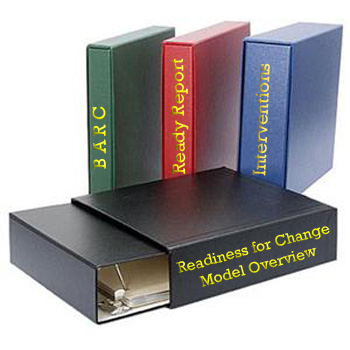 Related to the Youth Audit Form & Quadrant Checklists is another professional development training packet and instrument created by Dr. Tom McIntyre. The “Readiness for Change” assessment instrument does just that: It determines a youngster's stage of willingness for change toward adopting more prosocial behavior. The accompanying intervention strategies packet allows you to move the youngster toward higher levels of motivation to change his/her behavioral pattern for the better. Click on the image for more information.
Related to the Youth Audit Form & Quadrant Checklists is another professional development training packet and instrument created by Dr. Tom McIntyre. The “Readiness for Change” assessment instrument does just that: It determines a youngster's stage of willingness for change toward adopting more prosocial behavior. The accompanying intervention strategies packet allows you to move the youngster toward higher levels of motivation to change his/her behavioral pattern for the better. Click on the image for more information.
______________________
Other Resources
The Book That Started It All
(This text describes the Circle of Courage Model)
Already familiar with the model?
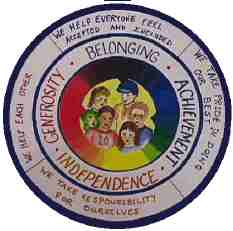
Take a look at that book that was written FOR kids with severe behavioral challenges.
Take a look at the materials for increasing a greater willingness to engage in behavior change for intervention-resistant kids.
*"Circle of Courage", "RAP", and "Developmental Audit" are registered trademarks of the non-profit Starr Global Training Network, a company that provides research, publications, and training through Reclaiming Youth International. For information visit www.reclaiming.com).
Author: Tom McIntyre DoctorMac@BehaviorAdvisor.com
